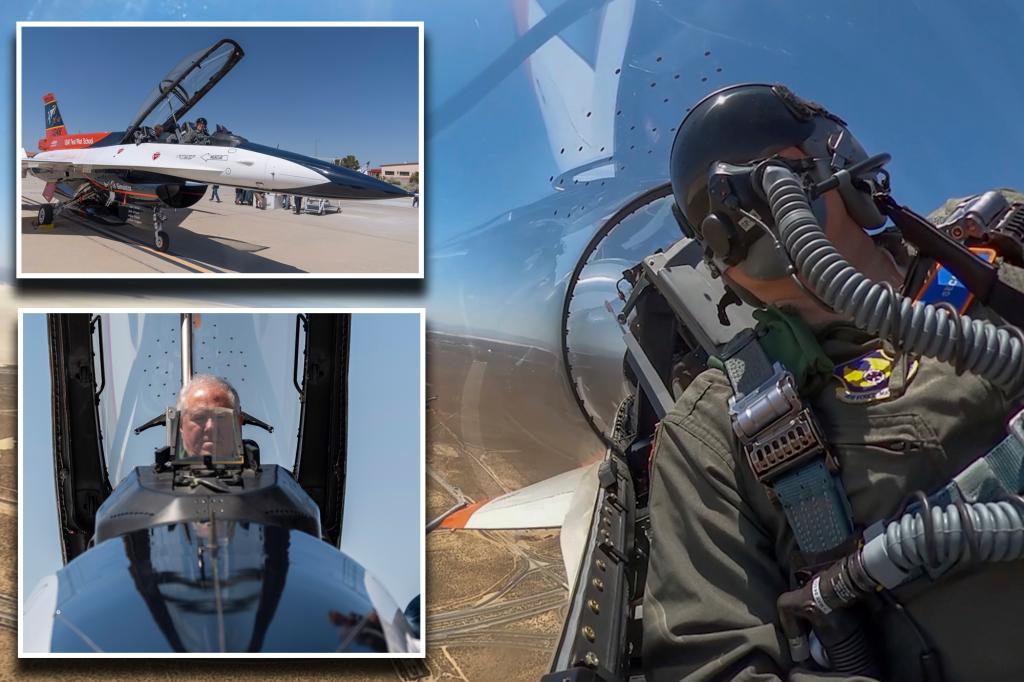US Air Force Secretary Frank Kendall recently flew in an AI-controlled F-16 fighter jet over the desert in California, showcasing the future of autonomous air warfare. Kendall had announced his intention to fly in a fighter jet controlled by artificial intelligence to the US Senate Appropriations Committee’s defense panel, highlighting the importance of autonomously operated drones in the future of military aviation. The flight took place at Edwards Air Force Base, known for being the facility where Chuck Yeager broke the sound barrier, where Kendall experienced AI flight firsthand.
During the AI-controlled flight, Kendall reached speeds exceeding 550 mph and experienced forces of nearly five times the force of gravity. The F-16 controlled by AI, named Vista, flew maneuvers alongside a human-piloted F-16, demonstrating the capabilities of AI in air combat situations. Kendall expressed confidence in the technology, stating that it is a security risk not to have AI capabilities given the advancements in air combat technology. Despite concerns about AI being able to make autonomous decisions about firing weapons, Kendall emphasized that human oversight will always be present.
Various groups, including the International Committee of the Red Cross, have expressed concerns about the use of AI in military operations, citing fears about ceding life-and-death decisions to sensors and software. The need for urgent international political responses to the use of autonomous weapons is highlighted, emphasizing the importance of human control in such decisions. The Air Force aims to have an AI-enabled fleet of over 1,000 AI-operated drones in operation by 2028 to enhance combat capabilities while maintaining human oversight.
The Pentagon’s Collaborative Combat Aircraft (CCA) project seeks to develop AI-guided planes through contracts with private companies such as Boeing, Lockheed Martin, and Northrop Grumman. The project aims to add at least 1,000 new drones to the Air Force, which will operate alongside human-piloted jets and provide cover, scouting, or communication functions. Cost-cutting and innovation are key drivers behind the project, with Deputy Secretary of Defense Kathleen Hicks highlighting the importance of deploying AI-enabled autonomous vehicles to bolster US military capabilities.
The Pentagon is pursuing AI-enabled autonomous drones to modernize and enhance its air defense capabilities in response to China’s advanced air defense systems. Drones have the potential to disrupt enemy defense systems, provide surveillance for crews, and offer strategic advantages in combat situations where manned aircraft are at risk. The deployment of AI technology in military operations is seen as essential for maintaining air superiority and ensuring national security. Despite concerns about the implications of AI-powered war machines, the integration of AI into military operations is a necessary step for future warfare strategies.


